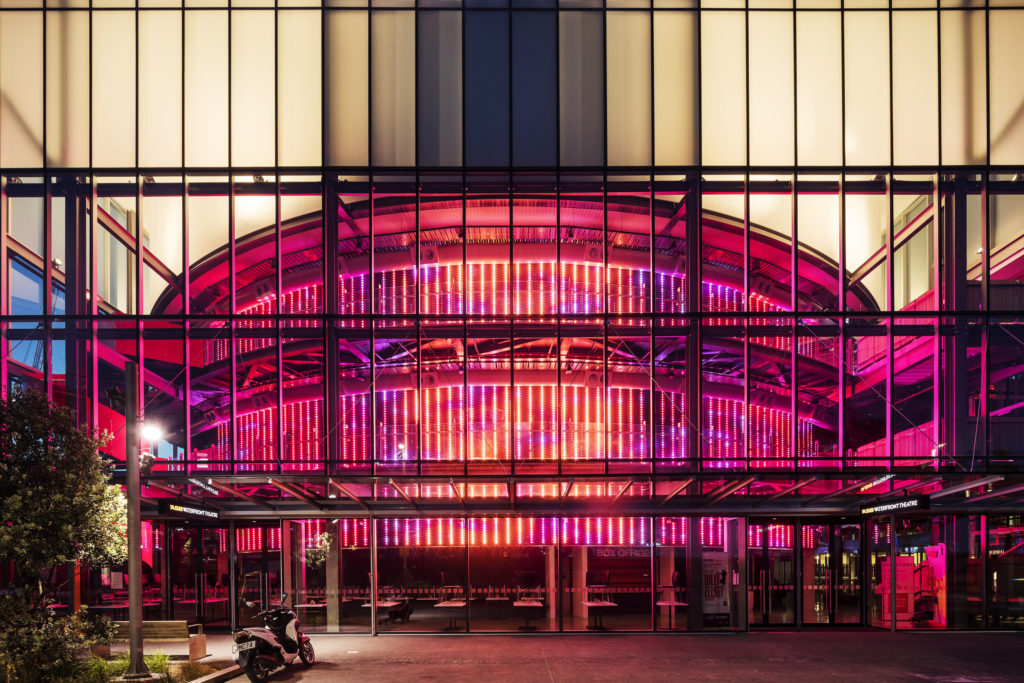Leo Villareal blends artistry with science as well as technology with beauty. His work consists of captivating LED installations that have various speeds, color, and much more. As part of his image, he integrates architecture into his work which is why you might see his work at landmarks around the world. This also allows him to work with many architects.
Much of the tools he plays around with are pattern, color, geometry, and time. This is shown through his disinterest in high quality pixels. He tends to start with the simplest forms and builds elements within a framework. While including the physical display, he also adds the dimension of time which results in specific movement, change, interactions, and ultimately, growth into a complex work of art. In order to do this, a critical component of Villareal’s work includes his own development of software that includes parameters like opacity, speed, and scale.
One of his work includes “Buckyball.” Villareal stated that this work started from only hexagons and pentagons and grew into something much bigger. This piece really shows his influence of geometry and what it can become. There are also benches around the piece which is intended solely to focus your attention on the display.

Another piece of art includes the “Star Ceiling.” This is a major example of his use of pixels and building a framework from elements. From the video, you can tell that it starts small and builds to bigger and more complex. Villareal also mentioned that the ceiling reminds him of the sky which is why nature is also a major influence for him.

The next two examples include the use of architecture in his work. These are “Illuminated River” and “Light Matrix.” The “Illuminated River” displays slower transitions. But most importantly, exemplifies the reason that he used architecture in the first place. He wants to liven up the area or environment. Similarly to nature, he wants it to look its best. By lighting up the bridges along the river, he brightens the darkness and sets the tone. In addition to this, the “Light Matrix” demonstrates that within his own software, it is coded so that there are random changes and no specific pattern. The lights also detail the work of the architect as shown in the photo


Lastly, the “Multiverse” incorporates not only a view, but a feeling. You not only look at it, but are in it. As you walk through a hallway, you see thousands of random LED’s that can change your emotion within seconds. It switches from more fast paced to slow, from flashing to slower transitions. It is exactly what you would think of if you thought about being in the “multiverse.” The video shows the piece in more depth.

Sources/Links
http://www.edmistontrust.org.nz/artworks/light-matrix-auckland-theatre-company/
https://www.artnet.com/artists/leo-villareal/biography
https://urbanomnibus.net/2012/10/sequence-of-light-a-conversation-with-leo-villareal/